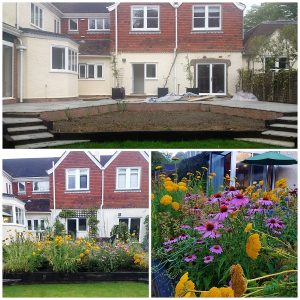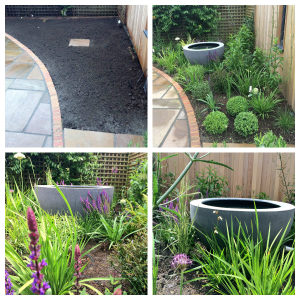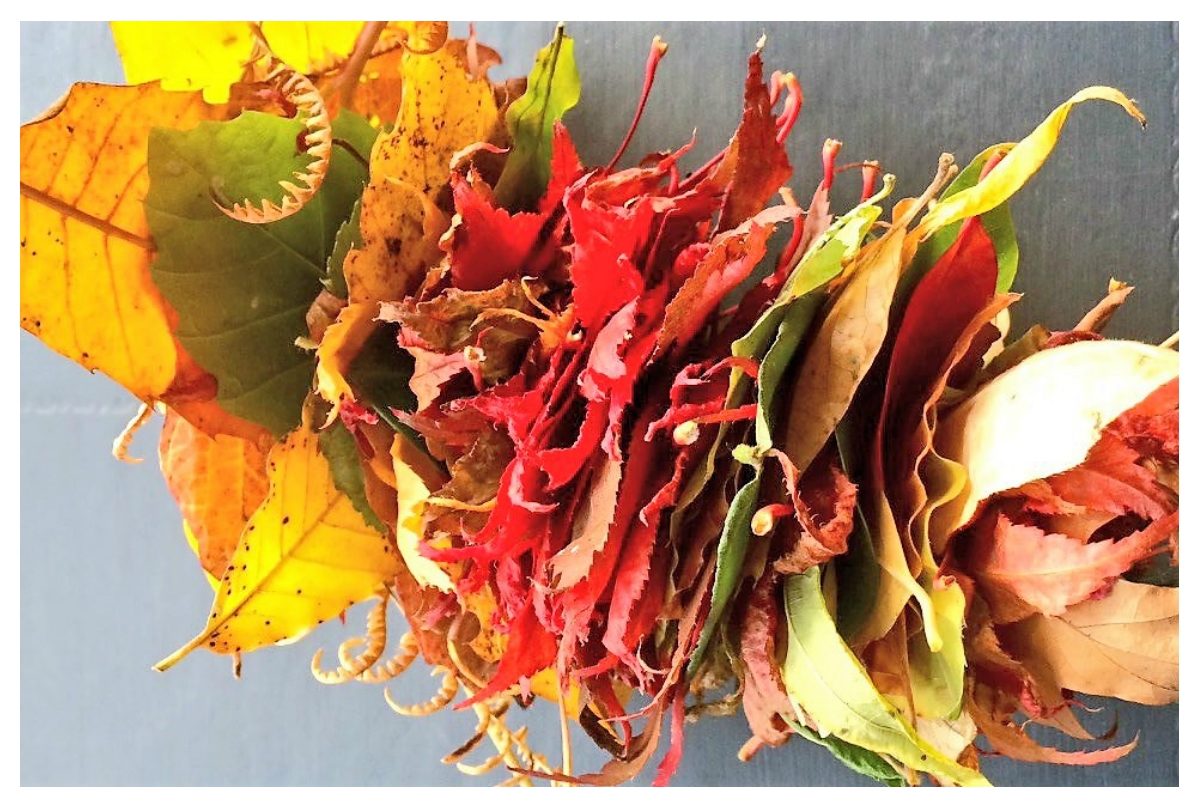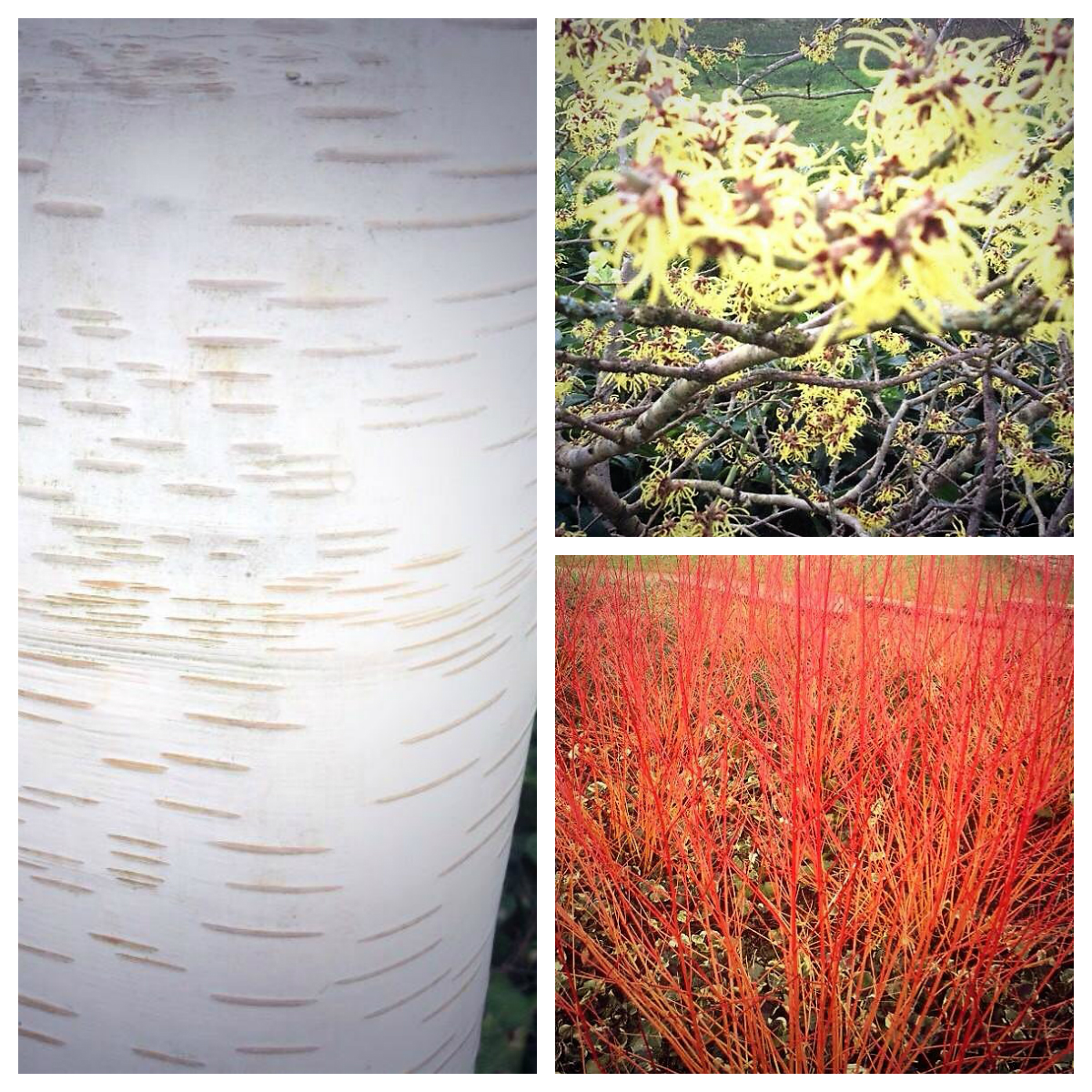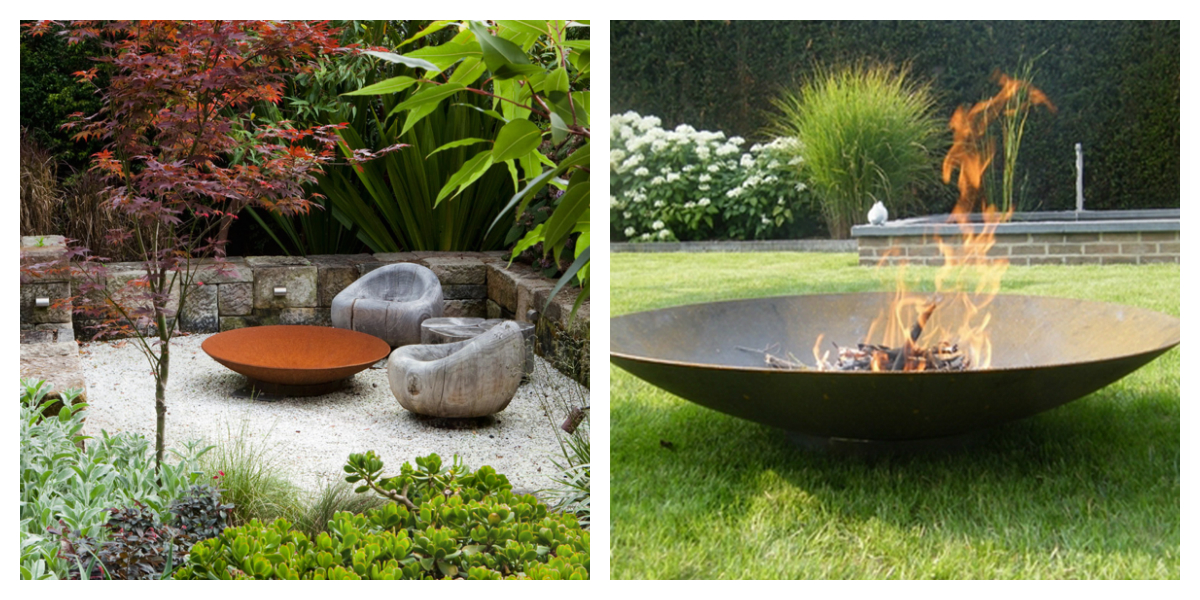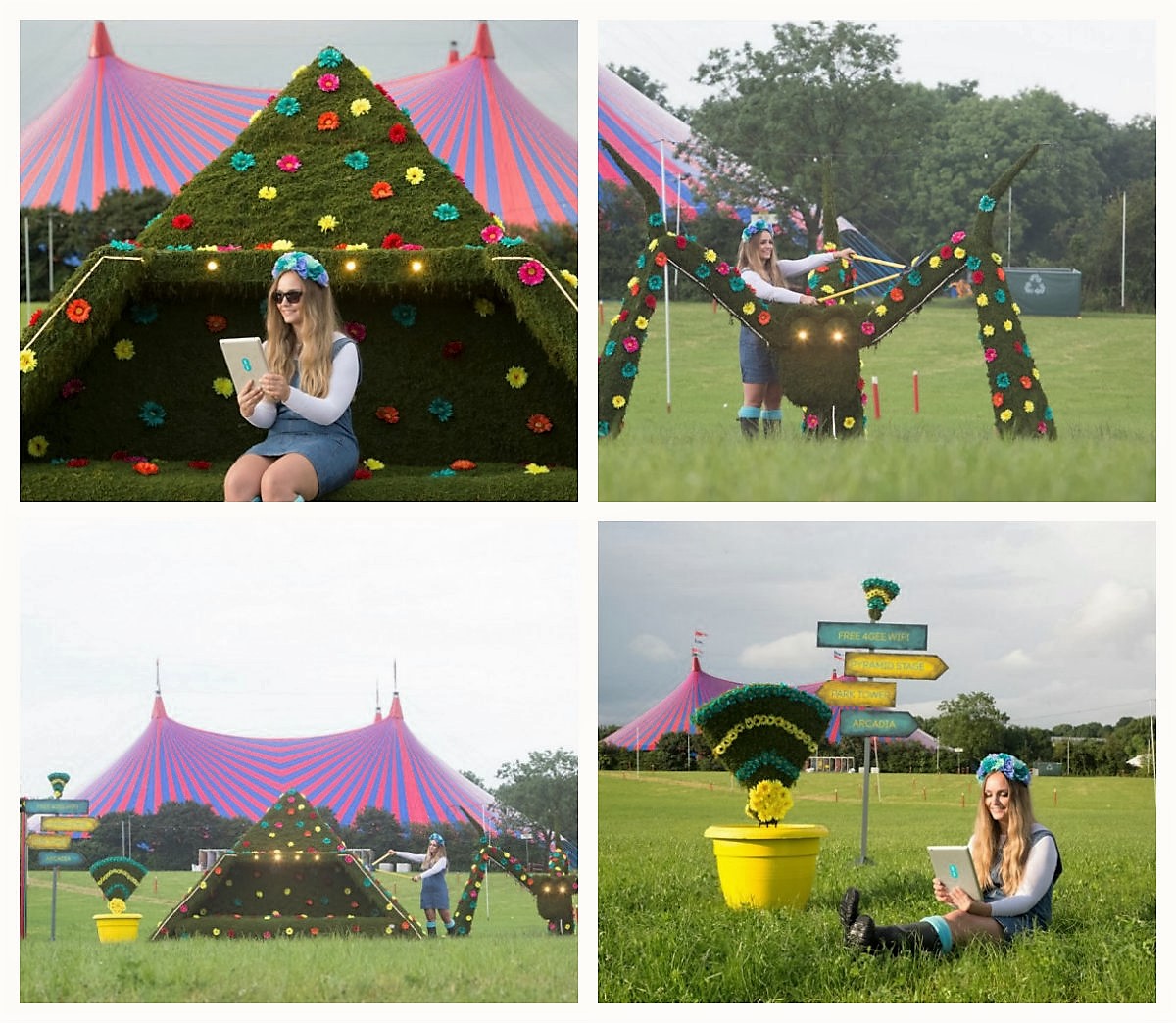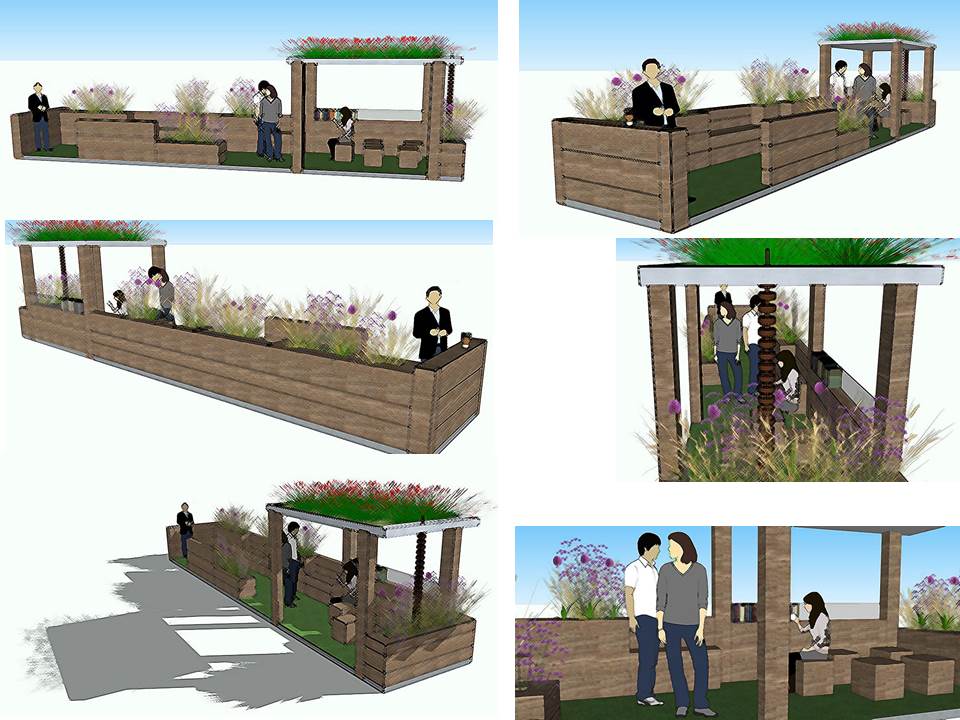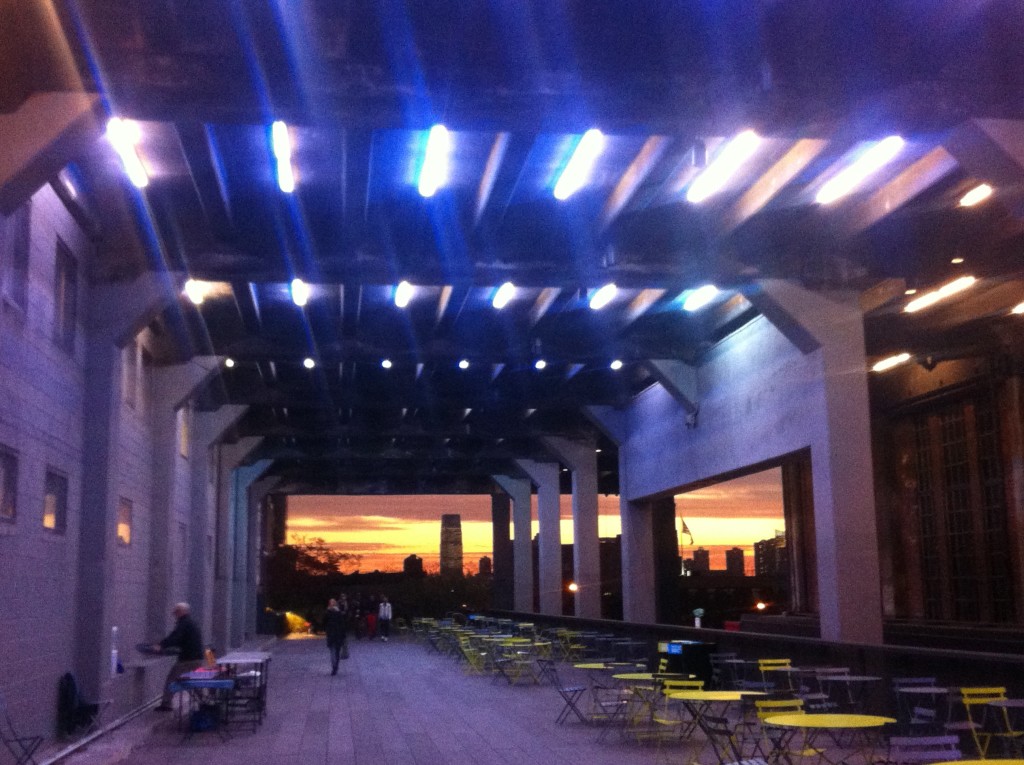How to achieve ‘Beautiful Garden Borders’
Fact, did you know? A beautiful well maintained garden can add up to 20% to the value of your property – that’s an extra 60K based on the UK average property price.
NOW, is the time to start planning that injection of fabulousness into your own outdoor space, whether it’s a border makeover, complete re-design or just adding to an existing planting scheme, there are lots of considerations to factor into your initial planting plan project:
- Orientation of your garden?
- Soil type?
- Theme – exotica, architectural/informal or formal?
- Fragrance and biodiversity?
- Optimum height & spread?
- Low maintenance if time poor?
- Winter seed head & colour interest?
- Peak flowering season?
- Colour palette, texture & unity?
- Distinctive style & individuality
Inception should be a joy. I would always suggest that your garden and indeed borders should reflect your own individual personality – if you’re eccentric, why not opt for a planting scheme that echoes these qualities? Start by, measuring the existing border and draw it to scale using a scale ruler and graph paper – a simple sketch can also work equally as well. Draw proportional circles, each circle representing one plant, some species can be overlapped at the edges of the border to create a softening effect. A drawing helps to ascertain exactly how many plants are required, space division and the mass: void of your border.
Tip #1 Remember the ‘dots & in-fillers, these are short lived species without their own allotted space such as, ornamental bulbs – short lived but dynamic!
Tip #2 Remember, your planting plan is not so dissimilar to ‘orchestrating a finely tuned firework display’!
Tip #3 Remember to consider the ‘genius loci’ – the spirit of your garden.
Tadworth client brief was: “I’ll leave it to you Cindy” ( yay!). I opted for an introduction of 100% herbaceous perennial plants, working to a colour palette of predominantly purple & pink with small accents of yellow and blue. This large border was the main focal area to the rear garden and now provides biodiversity as the butterflies and bees just love the Echinacea purpurea and Verbena bonariensis, along with fabulous aroma from the Perovskia and Phlox pani. Flame White Eye which both have great scent. Most of the perennials are self-seeding; meaning the spread of plants will naturally increase creating a delightful merging process.
Reigate client brief was: “To create a low maintenance border to incorporate a water feature”. I opted for a colour palette of predominantly purple & blue with accents of white, with the main flowering period being from May to November. This border is so low maintenance with only one winter cut back required after winter seed head and grass colour interest has been enjoyed.
As standard practice, both clients received a plant portfolio and performance & maintenance schedule – information required to nurture & enjoy the plants in the borders for years to come…
How to create ‘Gusto in your Garden’ this Winter…
The Winter garden calendar is without a doubt one of the busiest and most productive seasons in the garden. We have all enjoyed entertaining, relaxing and basking in our outdoor spaces during the summer months – including the 21st June; WOW, the UK’s hottest June day in 41 years, with a temperature of 34.5C! BUT, for now as the saying goes “you reap what you sow” and winter is a time to reflect, plan & make improvements to your garden in preparation for the following year.
You can easily introduce winter interest, colour and fragrance into your garden during the bleaker months, which will most certainly lift your spirits. Try planting Hamamelis mollis with its sweet and intoxicating fragrant yellow flowers which are at their best from December to February. Or Cornus sanguinea ‘Midwinter Fire’ for its striking orange and red bare autumnal stems. The lustrous winter white tree bark of a single-stemmed Himalayan birch will be sure to make your heart race! I love Betula utilis var. jacquemontii ‘Grayswood Ghost’, a real show-stopper planted on its own or as a matrix.
Ten ‘must do’ winter gardening tasks:
- Prune roses in the later winter months, when growth is just resuming around mid-February.
- Arrange for an arborist to prune ‘deciduous trees’ whilst dormant, when the last of the autumn leaves have fallen. Leave ‘evergreen’ trees and hedge pruning until the spring!
- Start planning & instructing landscape designers for spring projects.
- Wash all pots and containers that can harbour pests and fungal bacteria which can be damaging to your bulbs. Clean them thoroughly (I use Jeyes fluid!) and refill with fresh compost.
- Clear fallen leaves from lawns to allow sunlight and air onto your lawn, this will prevent suffocation and deter moss from growing
- Create a ‘leaf heap’ which can be a simple construction of chicken wire and posts. Pop all of your fallen leaves onto the heap to be used as mulch next year.
- Put borders to bed by cutting back all herbaceous perennials after you have enjoyed winter seed head interest.
- Introduce organic mulch to borders to protect plants whilst dormant from the harsh winter elements.
- Plant spring flowering bulbs for pops of colour during spring – a sure sign winter has ended!
- Cut back climbers from wooden structures such as pergolas and make any appropriate repairs in preparation for next years growth.
& finally, The ‘must have’ garden feature for winter; I shall definitely be specifying this gorgeous corten steel fire pit in my client’s garden schemes. Suitable for any sized space or budget. Starting out as blue steel, but as soon as Corten Steel is exposed to the elements it will naturally weather and develop a rich eye catching patina. Available from The Pot Company, Tunbridge Wells from £65.00. Why not pop one on your Christmas list – I know I will be!
EE Glastonbury Festival 2016 Floral Styling Project
You can imagine how super happy I was when approached by Agrumi Topiary suppliers of bespoke topiary structures, to partner with them and provide the floral styling elements for their EE Glastonbury Festival 2016 project.
EE, the official technology and communications partner of Glastonbury Festival commissioned Agrumi to build three large 4G Wifi topiary hotspots to ‘echo’ some of Glastonbury’s most iconic areas/stages at the festival. These structures were to be working Wifi hotspots for the duration of the festival, providing free and super-speedy 4G Wifi to festival-goers.
The three topiary structures comprised of The Pyramid Stage (225cm x 400cm x 400cm), The Park Tower (255cm x 85cm x 85cm) and Arcadia Stage (225cm x 315cm x 315cm.).
My brief was the responsibility to a) source materials to be used for the individual branding of the structures, which was to reflect the brand/brand colours, b) style these fabulous handmade and gigantic structures incorporating ‘flowers that will withstand the great British weather’ – with the latter in mind, I opted safely for faux silk gerbera!
SO, armed with 1000 stems of silk gerbera, 500 metres of double faced satin ribbon, 2000 cable ties and 30 tubes of floral adhesive, I headed for Hampshire where I practically moved in for 4 days prior to Glasto with the Agrumi team.
Such fun! x
See more of EE’s stunning images at http://newsroom.ee.co.uk/ee-brings-4g-wifi-to-glastonbury-with-its-alternative-hedgeliners
Have you ever wondered…. What is a Parklet?
Would love to share with you my recent Parklet design, often spotted in the US but rarely seen in the UK – yet!!
A Parklet is a public space, usually an extension of an urban pavement which usually takes up two existing parking spaces and incorporates non-permanent materials. Trees, sustainable planting, bicycle parking, umbrellas and lighting can all be integrated. Parklets often add much needed green space to over populated and densely urban areas such as hectic city centres. Sometimes sponsored by local businesses, local councils or retailers, they make a great public space which can be enjoyed by all – sit read a book, sip a coffee, people watch, munch on your lunch or just take time to smell the roses!
My own conceptual Parklet scheme incorporated the following elements:
- Access for all – the scheme is built on an adjustable raised frame of two sections that sits flush with the existing pavement kerb stone edge.
- Recycled materials – All sleepers are 100% reclaimed and eco-friendly untreated. ‘Pre loved’ artificial grass which is maintenance free and does not require costly irrigation to be sourced from an identified supplier. The sub base for the green roof comprises of recycled crushed brick and recycled felt. The zinc edging which finishes the frames of the base and green roof is from a reclaimed source. All other timber used is from sustainable sources (FSC).
- Seating – Integrated seating for six, moveable cube seating for five and for those who wish to stand and admire the view another comfortable 5 areas.
- Biodiversity – Planting associations and a wildflower green roof have been selected for their alluring qualities to bees, birds and butterflies and offer an urban habitat for nature.
- Sustainable urban drainage – Weep holes are to be incorporated into the lower areas of the sleeper planting compartments. A rain chain has been integrated into the wildflower green roof to allow any excess water to irrigate the rain border below.
- Library – A small shelf area has been built into the scheme providing a ‘take a book/leave a book facility and offering recycling on a small scale for all those who visit.
- Low key management – No waste bins have been incorporated in order to encourage visitors to take away and dispose of their own litter responsibly.
- Delivery – This modular scheme is constructed in sections for ease of transportation and final assembly.
Hope to see you on my Parklet one day – we can ‘munch our lunch’ together’!
C x
A winter wander along The High Line Public Park on Manhattan’s West Side….
An elevated public park which runs from Gansevoort Street in the Meatpacking District to West 34th Street, between 10th and 12th Avenues. Constructed on an existing and historic freight rail line, the last train ran along its tracks in 1980 and was apparently transporting three carriages of frozen turkeys! Rescued from further decline and demolition by Friends of the High Line who fought for the High Line’s preservation and transformation.
In 2004 Friends of the High Line selected Piet Oudolf as planting designer, Piet focused on the existing landscape that adorned The High Line before its revitalisation into a public park for his inspiration.
I observe with great delight that the planting character is a combination of meadow, prairie and woodland with perennials in abundance. This style of planting requires little maintenance, is drought tolerant, sustainable and provides consistent displays of eye candy throughout all seasons. Grasses weave in and out of the exposed joints of the precast concrete paving units, these units sit handsomely with the introduction of Corten steel border edging which jointly provide a real ‘honest’ and industrial element to the overall ambiance of the park.
Cindy’s tip… Try out the sliding steamer chairs which have been constructed on the original railroad lines and take a ‘view and a pew’ at The High Lines own Amphitheatre at 10th Ave.


